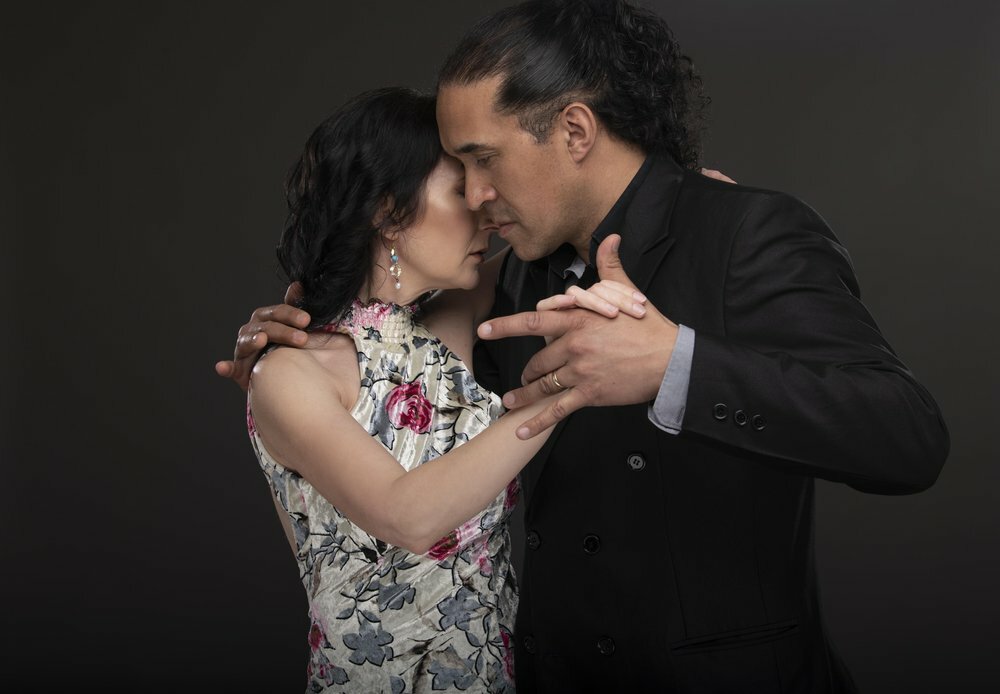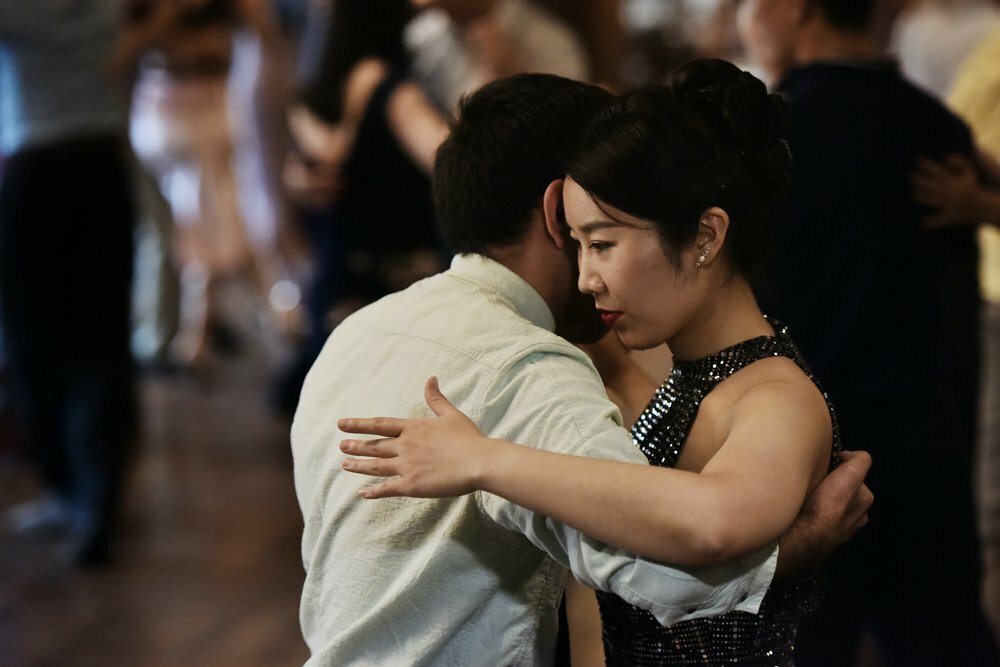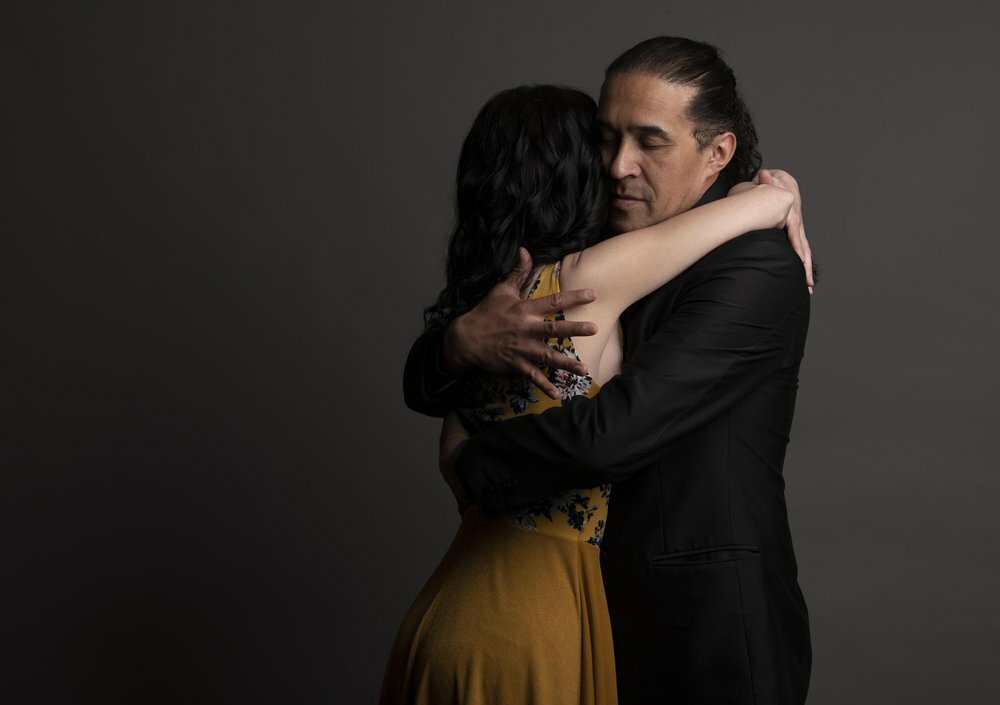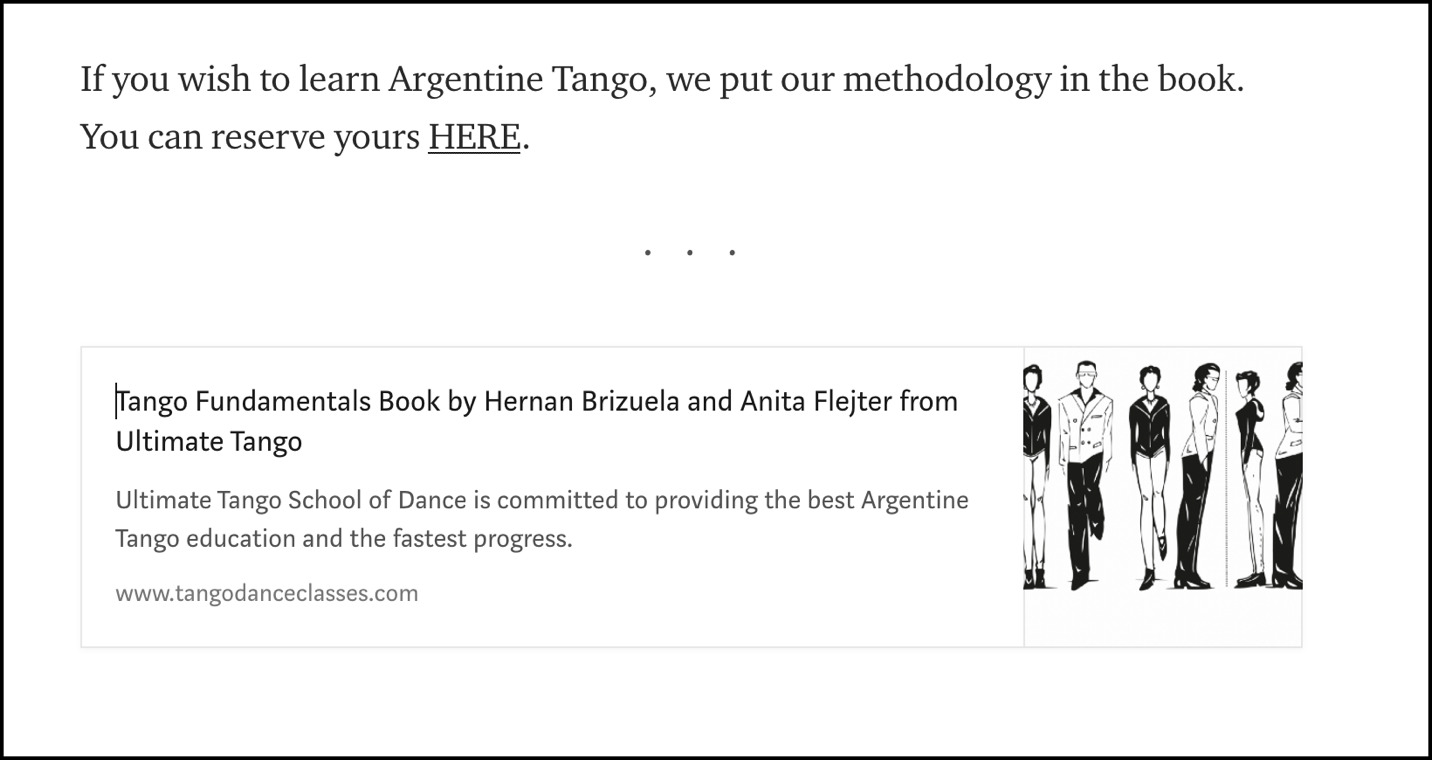It is believed that Argentine tango was conceptualized by the porteños of Buenos Aires sometime in the 1880s.
With nearly 150 years since, it is inevitable that some aspects of tango have gone through evolutionary stages resulting in various changes. Some of these changes involve tango’s steps, figures, movements, and even the philosophies surrounding the dance.

That said, one aspect of tango that is often highly debated is its authenticity. As with anything that has a long history, preserving the authenticity of any concept can be a challenge. In the case of tango, the changes typically pertain to the sensuality of the dance, which was not initially embraced by cultures outside of Buenos Aires. This was especially true in Western countries such as France, England, and the United States.
Thus, regarding its sensuality, many people believe that the only authentic tango is the one danced in “close embrace” rather than that danced with an “open embrace.”
But is this a correct assessment of tango’s so-called authenticity? Should the embrace used in tango matter?

The Shapes of the Embrace
In many existing materials discussing tango, one will encounter the terms “close embrace” and “open embrace.” Dance Facts describes these two types of embrace as such:
OPEN EMBRACE: Lead and follow are dancing with open space between their bodies
CLOSE EMBRACE: Practiced either with chest-to-chest embrace (used in traditional Argentine tango) or more loose upper thigh, hip area (common in international and American tango)
It remains a popular notion among modern dancers and instructors alike that “authentic” Argentine tango is danced with a closed embrace.
This may have stemmed from the fact that the kind of tango introduced in North America and European societies, in general, is closer to the more familiar and more “socially accepted” ballroom dancing, which employs a more open embrace rather than a closed one.
A post from Tango Voice gives a brief background:
● “During the (re)introduction of tango social dancing of Argentine origin to North American dancers in the late 1980s and 1990s,
the (close) embrace characteristic of tango social dancing in Buenos Aires was usually omitted in dance instruction, due in part to instruction being provided by stage dancers (who typically dance without an embrace in performance) and in part to recognition by teachers of social barriers against dancing with chest-to-chest contact.
● “In the mid 1990s Susana Miller introduced North American tango dancers to a stylistic variation of social tango dancing from the milongas of Buenos Aires characterized in part by maintained chest-to-chest contact;
Susana Miller labeled this style of dancing as ‘milonguero style tango’, to contrast with the label ‘salon style tango’ that had been given to the stylistic variation of tango dancing which did not include chest-to-chest contact.
These two stylistic variations were also often referred to as ‘open embrace’ and ‘close embrace’ tango, respectively.”
In today’s tango circles, the much-debated abrazo is further classified into different types. One such example is a post from Learning Tango, which outlines four of the most common tango variations for the embrace:

● “Airport hug” or close parallel embrace: This is characterized by a symmetrical contact along the upper body, wherein both dancers are connected through their solar plexus. This type of embrace is well suited to traditional tango music, wherein there is much walking and small movements. Conversely, it is not suited for flashy steps, crosses, and sweeping movements. The axes of both dancers can be shared or separated, thus varying the “lean” to be employed.
The other interpretation of parallel embrace can be Villa Urquiza style where dancing in parallel embrace is encouraged to enable movements to both sides. It is traditionally believed that some movements are only possible to one side - take cruzada for example where the follower crosses with the left leg upfront towards the open side of the embrace. With a modified embrace the cross can be danced with the other leg and to the closed side of the embrace,

● “Looser hold” or open embrace: No torso contact. Contact only happens along the length of the “inside” arm, primarily the leader’s right arm and the follower’s left arm. This embrace is more suited to sweeping movements or flashy steps rather than walking steps or small movements.

● “Angled” or V-shaped embrace: Closer contact on the leader’s right side or the follower’s left side while the opposite side is more open. This embrace provides space and support for crosses and volcadas, thus requiring continuous dissociation from the follower’s chest and hips. Rotation-based movements are more suited to this kind of embrace.

● Practice embrace: Hands of both dancers are on each other’s shoulders. Since this is a practice embrace, it isn’t generally used in social dancing but can be useful when practicing concepts such as dissociation. Like the closed parallel embrace, the practice embrace also employs a symmetrical hold that allows dancers to practice movements in both directions.
Back in the day, however, these classifications did not exist or were not codified into a list with their respective descriptions and instructions.
It wasn’t until around the 1990s, when Gustavo Naveira and company conceptualized Nuevo Tango, that Argentine tango began to have some form of standardization that would help in both instructing and learning tango.
For the most part, many tango dancers before the 1990s simply took stock of what they saw from more experienced dancers or milongueros, which often resulted in imitation rather than discovery or experimentation.
Does this mean then that the open embrace did not exist before the 1980s or 1990s?
On the contrary. It is important to note that the so-called open embrace did not solely occur during the revival of tango in the 1980s and 1990s. In fact, Benito Bianquet, more popularly known as El Cachafaz, was a famous tango dancer who used the open embrace style in tango movies he starred in such as Tango (1933) and Carnavales de Antaño (1940). The 1920s up to the 1940s, just before World War II, were largely considered as the golden years of tango due to the dance’s popularity in both the dance halls and the big screen.
A scene from Carnavales de Antaño is one good example of El Cachafaz displaying his intricate footwork while dancing with an open embrace.
Another example of tango being danced with an open embrace is this YouTube video showing a scene from the 1921 hit, The Four Horsemen of the Apocalypse, starring Rudolph Valentino. Valentino’s tango performance was what catapulted him to stardom, to the point that he was mourned by almost 100,000 fans during his untimely death in 1926. In the aforementioned video, one can also see Valentino’s complex footwork and sweeping movements, which can only be done when employing the open embrace.
However, even though these two prominent tango personalities have displayed riveting performances using the open embrace, the popular notion still remains that tango danced in an open embrace is hardly authentic. Why is that?
Open Embrace vs. Close Embrace
There are many interesting arguments surrounding this topic. One only has to go to the comments section of this post from Tango Mentor to see the diverse opinions of tango dancers regarding the open and close embrace. The post begins by talking about the “origin” of the tango embrace, which in itself is an interesting take from the author:
“What is the origin of the embrace?
“Well, there are many stories about this and not real evidence for them, so you can choose what you believe. Me, personally, I believe the story that Osvaldo Natucci once told — that the embrace was created so close and so intimate because tango was created by emigrants. They arrived in Buenos Aires alone, leaving behind their country, their wives or girlfriends, their mothers, and fathers… '“
“Most of them were disappointed: they dreamed [of getting] rich, but ended up not having [enough] money to even go back home.”
“Alone and abandoned, they needed the warmth of the human touch… [just like] most of us today in society, [who are] deprived of real human interaction.”
The same post then discusses three types of embrace, noting that the open embrace is not an embrace at all but a position, as the only communication that happens is through the hands and not the torso. It also notes that the salon style tango, which is often taught by “show” dancers, is not a real close embrace but a “fake” close embrace despite perhaps being the most popular approach.
Another blog, In Search of Tango, shares the same sentiments about the open embrace versus the close embrace:
“Close embrace tango and open embrace tango are two different dances that have little in common in their structures, techniques, feels, and philosophies. [...] “
“[O]pen embrace tango has more in common with ballroom dance than Argentine tango. Just like in a standard ballroom dance, in open embrace tango the two partners are apart by an arm's length without other physical contact other than the contact of the hands. Each partner is on his/her own axis independent of the other so the two do not rely on each other for balance and support.
Theoretically, the man is supposed to lead with his torso, but since there is no torso contact, his lead is sent through his hands, and the woman receives the lead through her hands also. The feeling of dancing open embrace tango is exactly like dancing a standard ballroom dance. No intimacy and comfort of embracing another person. No exchange of feelings through direct torso context, no sensation of the two connected bodies moving together in sync to music. No emotional involvement between the dancers.
The fun of dancing open embrace tango mainly comes from a broader range of movement possibilities due to the increased space between the partners. Each dancer focuses on his/her own performance. They do not enjoy the physical existence of the other person.”
Based on these two examples, one can then say that a popular argument in favor of the closed embrace is one that hinges on both the physical and emotional connection ideally achieved in authentic Argentine tango.
This is perhaps why the connection between tango dancers is still called an “embrace” instead of the more universal “dance frame,” which is a term used by other dances.
The term embrace implies intimacy and sensuality, and having a more profound connection than that which is achieved merely by forming or sharing a “dance frame.”
On the other hand, there are those who regard both the open and close embrace as valid approaches that can achieve the same intimacy. A commenter from the Tango Mentor post said:
“Tango is a lot about connection and there are plenty of ways to connect, just as you can dance in (‘real’) close embrace and feel nothing.”
“Tango is not only about embrace, tango is a dance, an art, it’s conversation and many other things, too…
[...] While (‘real’) close embrace is still my default embrace, it is not everyone’s and I enjoy dancing with dancers in a variety of embraces and in what you call “open position”. You may not consider it ‘real tango’ but I do!”

When looking at history, however, this debate about which embrace is more “authentic” might not have such a profound origin.
In fact, choosing which embrace to apply, regardless of its purported authenticity, might be borne out of more practical reasons such as the availability of space.
Back in the 1920s, dancing was such a popular pastime that spacious dance halls were everywhere. Dancing was largely a part of socializing, at least up until the Second World War, when recreation was no longer a luxury everyone could afford. Eventually, spaces for dancing became smaller as real estate prices rose. This, among other reasons, may have led to the prevalence of the closed embrace. It was simply impossible to dance using the open embrace because there just wasn’t enough space to accommodate these movements.
When tango was reintroduced in the ‘80s and ‘90s following the end of the oppressive regime primarily in Argentina, many other concepts such as the flexible embrace or elastic embrace were made popular by tango dancers such as Chicho Fromboli. It was a time of new ideas that culminated in what is generally known as tango today.

Which Embrace Is Correct?
Choosing between open and close embrace is a matter of personal preference. There is no hard evidence to show that one or the other is more “real” or authentic. Both are used in tango regardless of where these concepts are believed to have originated.
Thus, there is no “correct” embrace, only one that achieves true connection between oneself and with one’s partner.
Which embrace are you most comfortable with?
If you wish to learn Argentine Tango, we put our methodology in the book. You can reserve yours HERE.

